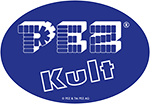
Stadt Hamm
Hamm ist Großstadt und grüne Oase mit vielen Freiflächen und naturnahen Räumen innerhalb des Stadtgebietes. Hamm ist die Stadt für 180.000 Menschen. Und mit knapp 790 Jahren spannender Stadt-Geschichte ist Hamm immer einen Ausflug wert.
Die Entwicklung der Stadt ist geprägt durch die verkehrsgünstige Lage die auch heute noch bestens ist. Im Jahr 1226 gegründet am Zusammenfluss von Ahse und Lippe, hat das Wasser für die Stadt immer noch eine große Bedeutung: Lippe und Datteln-Hamm-Kanal sind als Transportwege wichtig. Nicht umsonst befindet sich in Hamm der zweitgrößte Kanalhafen Deutschlands.
Die gesamte Stadt und Umgebung kann man bestens per Rad erkunden. Vorbei geht es dabei unter anderem am Maximilianpark, in dem mit dem Glaselefanten das weltweit größte Gebäude in Tiergestalt zu finden ist. Die Waschkaue auf dem Gelände der ehemaligen Zeche Maximilian wurde zum Elefanten umgestaltet und ist damit das Wahrzeichen der Stadt.
Dazu gehören auch der Sri Kamadchi Ampal Tempel, der größte südindische Tempel Kontinentaleuropas, die Schlösser Oberwerries und Heessen oder die Pauluskirche am Marktplatz mit ihrem 80 Meter hohen Turm. Schloss Heessen war sogar schon Kulisse für verschiedene Film- und Fernsehproduktionen. Und zu den Ägyptern geht´s im Gustav-Lübcke-Museum, denn dort ist die bedeutendste Ägyptische Sammlung des Landes NRW angesiedelt.
City of Hamm
Hamm is a large city and a “green oasis“ with large open areas and areas close to nature within the urban space. Hamm is “the“ city for 180000 people. And with more than 780 years of diversified history Hamm is worth a visit to Northrhine Westphalia.
The history of the town has been influenced by its easily accesible location. Being founded in 1226 at the junction of the rivers Ahse and Lippe water has always been of major importance for the city.
Until today the river Lippe and the Datteln-Hamm canal are important routes of transport. It is not a coincidence that Hamm has the second biggest canal port in Germany.
The whole city and surrounding countryside can be explored by bike. Amongst many other interesting landmarks you ride past the Maximilian park in which the world's biggest accessible building like an animal, the glas elephant, can be found. The washing room on the premises of the former coal mine Maximilian has been redesigned into an elephant and so has become the town's landmark.
Further landmarks are the Sri Kamadchi Ampal temple which is the biggest South Indian temple in continental europe, the castles Oberwerries and Heessen or the Paulus church at the market with its 80 metres high tower. Castle Heessen has even been a setting for different film and television productions. And if you want to meet Egyptians you can go to the Gustav-Lübcke museum, because there the most important collection of Egyptian art of the county Northrhine Westphalia is resident.
PEZ-KULT
Uwe Sauerland
Mail: uwe(at)pez-kult.de

